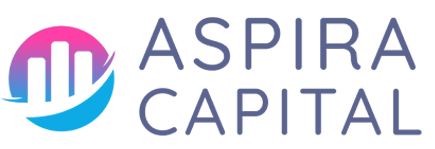Table of Contents
- Understanding Corporate Strategy
- The Importance of a Strategic Planning Template
- Setting Your 2025 Business Goals
- Developing a Growth Roadmap
- Defining Clear Business Objectives
- Utilizing Effective Planning Tools
- Crafting Your Company Vision
- Conducting a Strategic Analysis
- Goal Setting Strategies
- Your Success Template
Understanding Corporate Strategy
Corporate strategy outlines a company’s overall direction and prioritizes its initiatives to achieve significant goals. A well-defined corporate strategy serves as the backbone for decision-making and unified efforts across the organization. It emphasizes the need for:
- Vision Alignment: Ensuring that every department understands and aligns with the company’s overarching vision.
- Resource Allocation: Strategically deploying resources to maximize efficiency and profitability.
- Market Positioning: Identifying growth opportunities and potential threats within the competitive landscape.
The Importance of a Strategic Planning Template
A strategic planning template acts as a blueprint for your corporate strategy. It simplifies the complex process of outlining your vision, objectives, and tactical actions into a guided framework. The benefits include:
- Consistency: Standardizing the planning process across departments.
- Clarity: Elucidating roles, responsibilities, and timelines.
- Adaptability: Providing a structure that can be tailored as necessary to respond to changes in the market.
- Accountability: Assigning clear ownership of tasks and goals.
Setting Your 2025 Business Goals
Establishing 2025 business goals is crucial for maintaining focus and measuring success. To ensure your goals are effective:
- Utilize the SMART criteria: Specific, Measurable, Achievable, Relevant, Time-bound.
- Align goals with your company vision and mission to promote coherence.
- Involve stakeholders in the goal-setting process to foster ownership.
Some examples of 2025 business goals may include:
- Achieving a market share increase of 15% in the next three years.
- Launching two new product lines by Q3 2025.
- Reducing operational costs by 10% through efficiency measures.
Developing a Growth Roadmap
A growth roadmap outlines the steps necessary to reach your 2025 business goals. It should include tactical objectives, project timelines, and key performance indicators (KPIs). Consider the following when developing your growth roadmap:
- Market Analysis: Assess the current market landscape and identify growth opportunities.
- Resource Assessment: Evaluate available resources (human, technology, and capital) to ensure feasibility.
- Implementation Schedule: Create a timeline that prioritizes critical initiatives.
Key Elements of a Growth Roadmap
- Milestones: Define significant checkpoints to measure progress against your objectives.
- Risk Assessment: Identify potential risks that may hinder growth and develop contingency plans.
- Feedback Mechanisms: Establish a process for regular reviews and adaptations of the roadmap.
Defining Clear Business Objectives
Business objectives translate your goals into actionable steps. To define clear objectives:
- Ensure objectives support your overall corporate strategy.
- Establish clear metrics for success to monitor progress.
- Communicate objectives throughout the organization to ensure alignment.
Examples of business objectives could include:
- Increasing customer retention rates by 20% by the end of 2025.
- Expanding into two new international markets.
- Improving employee engagement scores by 15% through targeted programs.
Utilizing Effective Planning Tools
Employing the right planning tools enhances the strategic planning process. These may include:
- SWOT Analysis: Identify Strengths, Weaknesses, Opportunities, and Threats.
- PEST Analysis: Analyze Political, Economic, Social, and Technological factors influencing your strategy.
- Balanced Scorecard: Align business activities with the vision and strategy of the organization.
Selecting the Right Tools
When selecting planning tools, consider:
- Usability: Ensure tools are user-friendly for team members.
- Integration: Choose tools that integrate seamlessly with existing systems.
- Support: Opt for tools with robust customer support and training resources.
Crafting Your Company Vision
Your company vision serves as a guidepost for the future. Crafting a strong company vision involves:
- Identifying core values and beliefs of the organization.
- Envisioning what success looks like in 2025.
- Engaging employees in the vision creation process to foster a sense of belonging and motivation.
A compelling company vision should be:
- Inspiring: Capturing the imagination of employees and stakeholders.
- Future-oriented: Providing a long-term perspective that motivates continuous improvement.
- Clear and Concise: Easily understood and communicated across the organization.
Conducting a Strategic Analysis
A strategic analysis evaluates your company’s current position and identifies opportunities for growth. Key components of this analysis include:
- Market Research: Gathering information on market size, trends, and growth potential.
- Competitor Analysis: Assessing the strengths and weaknesses of your competitors.
- Internal Assessment: Reviewing internal capabilities, resources, and processes.
Tools for Strategic Analysis
Effective tools for strategic analysis include:
- Market Segmentation: Understanding different customer segments and their needs.
- Porter’s Five Forces: Analyzing the competitive forces within your industry.
- Value Chain Analysis: Identifying areas of improvement and efficiency within your organization.
Goal Setting Strategies
Goal setting is pivotal for driving organizational performance. Effective strategies to consider include:
- Top-Down Approach: Leadership sets overarching goals that cascade down to departments and teams.
- Collaborative Setting: Engaging employees from different levels to foster input and commitment.
- Monthly Reviews: Conducting regular check-ins to evaluate progress and make adjustments.
Encouraging Accountability in Goal Setting
To foster accountability in goal setting:
- Assign specific responsibilities for each goal.
- Implement regular update meetings to track progress.
- Celebrate achievements to maintain motivation and engagement.
Your Success Template
Create a success template to unify all aspects of your strategic plan. This template should encompass:
- Vision Statement: A clear articulation of the company’s desired future.
- Mission Statement: A succinct description of the organization’s purpose.
- Core Values: Guidelines for employee behavior and decision-making.
- Strategic Goals: A list of high-level ambitions for the organization.
- Action Plans: Detailed steps to achieve each objective, outlining responsibilities and timelines.
By utilizing this success template, you will create a coherent framework that guides your organization towards achieving its 2025 business goals.

